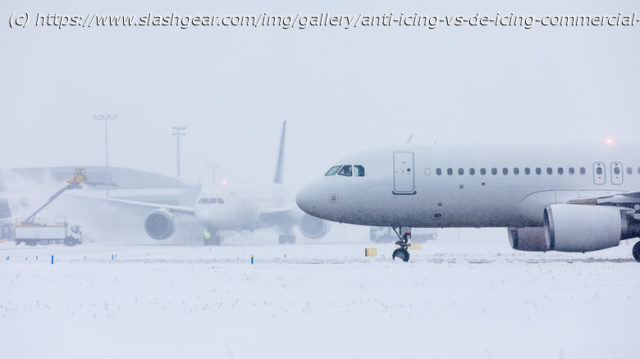There are two different ways to handle dangerous ice buildup for commercial jets: anti-icing or de-icing. How do they differ and which works best?
Freezing temperatures are one of the many mortal enemies of safe air travel, and we’re not just talking about jets trying to land on icy runways. A little frost might not sound like a big deal, but it only takes a bit of ice buildup in the wrong place to hinder a plane’s critical safety and operational equipment. Ice buildup can throw off a plane’s weight, block up engines and propellers, increase drag and friction on the body and wings, and more. Any one of these conditions could lead to a disaster, and in fact, there have been multiple aircraft emergencies and crashes directly attributed to ice buildup.
In order to prevent these disasters from manifesting, modern aircraft are equipped with an arsenal of frost-busting implements. These implements can be broadly sorted into two categories: anti-icing and de-icing. The former is meant to prevent ice from forming and accumulating on the plane’s body and inside its vital components, while the latter is meant to swiftly remove any ice that has accumulated. Both of these functions can be accomplished through a variety of ice-melting methods, including heat circulation, chemical agent sprays, and more. The primary difference is the point in a flight at which these systems are activated.Anti-icing systems are designed to prevent ice from forming at all
Pilots already have enough on their plate during any given flight, so it would be ideal if they didn’t have to put up with errant ice weighing them down on top of all that.






